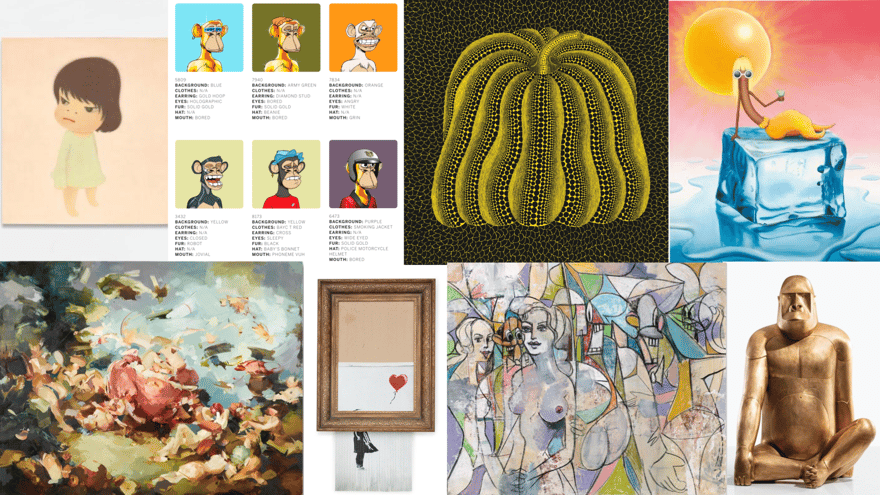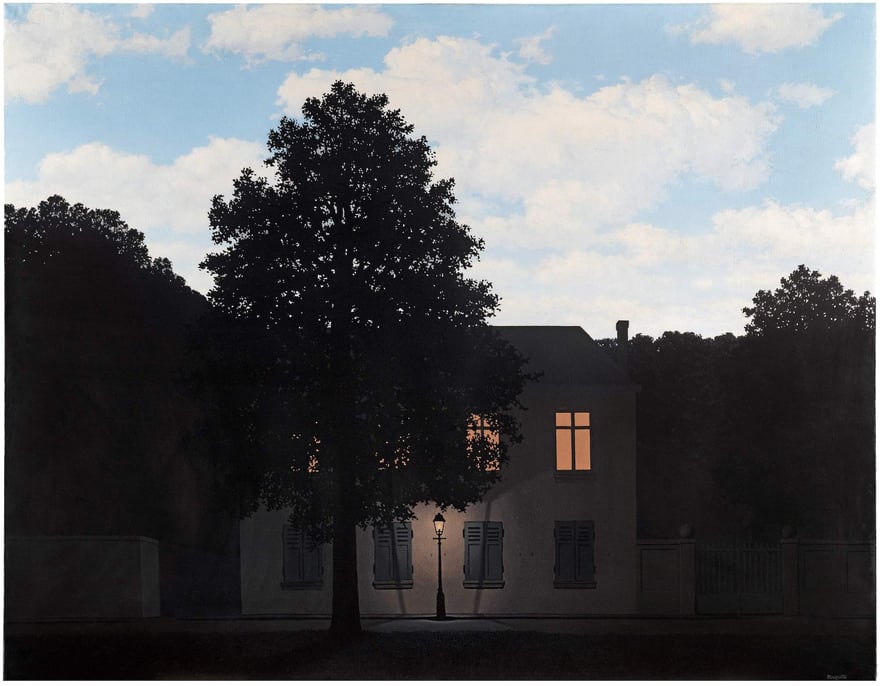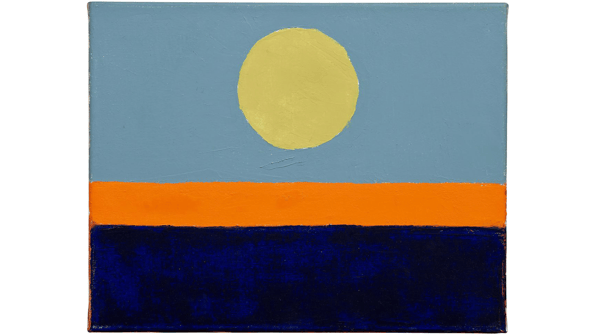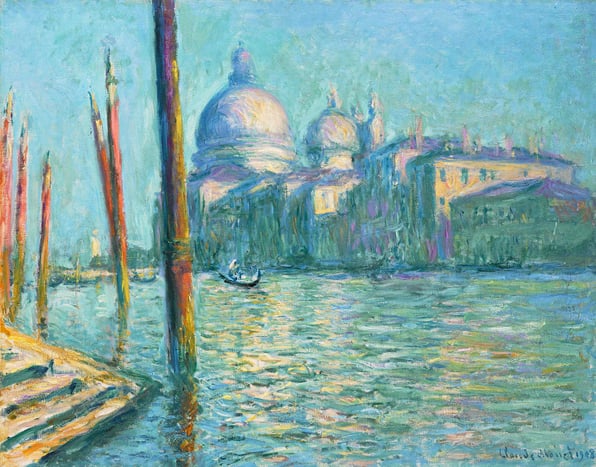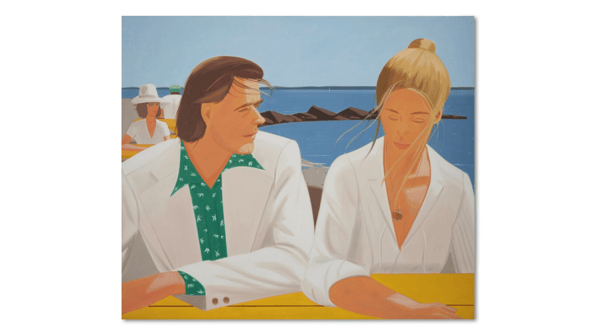Artist Spotlight: Jammie Holmes in Full Swing
A rapid rise in the market, attention from celebrities, and growing museum acquisitions have made this self-taught artist a target for dealers as well as collectors
Few artists have as dramatic and visible public debuts as Jammie Holmes did on May 30th, 2020 when he paid for five planes in five separate cities—Detroit, Miami, Dallas, Los Angeles and New York—to fly banners of text, each one displaying one of the last five sentences George Floyd uttered when he was murdered five days earlier. The work, entitled “They’re Going to Kill Me,” altogether read, “Please, I can’t breathe. My stomach hurts. My neck hurts. Everything hurts. They’re going to kill me.” The banners flew in each city from the hours of 11:30am to 9pm.
Seven months later, three of his paintings were sold at auction in New York and London for a combined total of nearly $175,000. That was just the beginning. The Dallas Museum bought a work of his last year, which is pretty good considering the self-taught Holmes had only ever entered a museum, the self-same Dallas Museum, five years earlier. His trepidation at going to a museum was one of up-bringing and class rather than ignorance or disdain.
After the Dallas Museum of Art commissioned two paintings from Jammie Homes for its 2020 show “To Be Determined,” the Nasher acquired Uncle, a 2019 work that Holmes was ambivalent about. He told Christopher Blay in an interview for Art in America last year that Uncle, in particular, was a work he could not bring himself to sell to collectors.
“Some shit I can’t let go of,” Holmes admits. Much of Holmes’s art is about showing the lived experience of himself, his family, and his peers in Thibodaux. He describes a troubled childhood filled with frustration. “We saw cars crash, guns waved, shootings, drugs, prostitutes, fistfights, everything,” he said to Blay. “And growing up, it was hard to express yourself … So everybody just turns to anger. Mine was so bad that I was in a mental institution.”
Coping with frustration and loss is a central theme for Holmes, who painted himself as a pallbearer in a series of paintings with the title Carrying Caskets. “My uncle lived this long life,” he told Blay. “He went to prison for a long time.”
“When I did Uncle, it was like, man, I just wanted to get that out of me,” he said. “I wanted to paint the essence of this man who was beat up by America.”
Holmes has made it clear in recent interviews that he is keen to see his work in museum collections. The Nasher obtaining such a personal work demonstrates that priority for the artist.
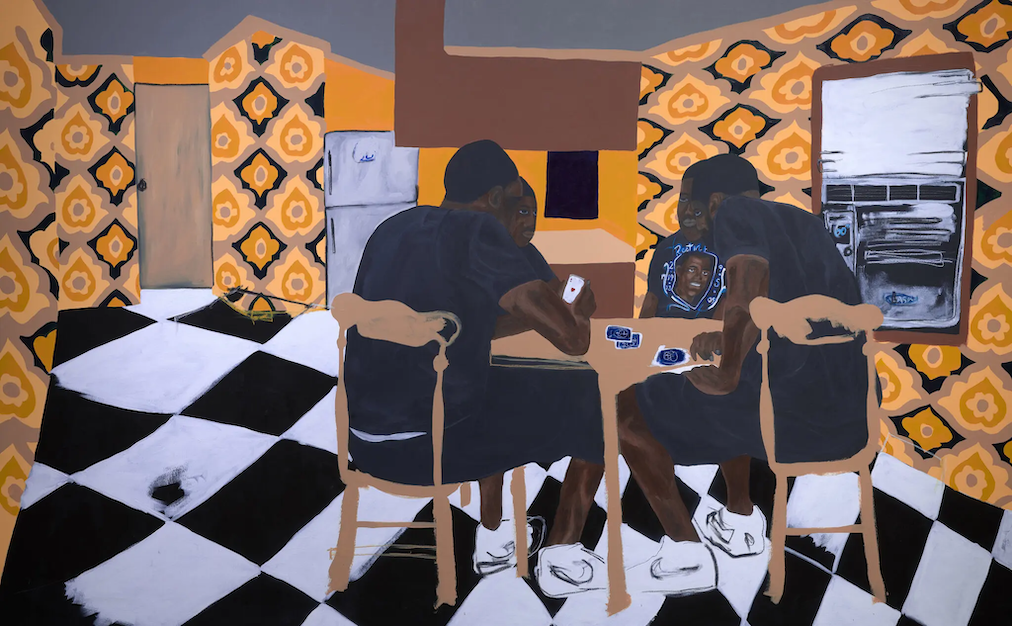 Jammie Holmes, Four Brown Chairs (2020)
Jammie Holmes, Four Brown Chairs (2020)Holmes’s path from rural Thibodaux, Louisiana to the oil fields to Dallas where he started painting full-time in 2019 to international auction houses and museums wends its way through music-industry collectors Lenny Kravitz, whose support played an essential role in his growing market, and Atlanta-based producer Coach K, as well as artists like Nick Cave, Derek Fordjour, and Amoako Boafo.
Represented by Detroit’s Library Street Collective gallery, Holmes never had a solo show until June of last year. Since then, Library Street Collective has partnered with Marianne Boesky to give Holmes access to a broader international clientele. Boesky announced late last year that she would be giving Holmes a show in Chelsea in the Fall of 2022. In the meantime, both galleries are working the art fair circuit to show Holmes.
In truth, it isn’t Holmes who needs access to a wider market. Bigger collectors clamoring to get in on the action need access to Holmes’ work. Until Library Street Collective and Boesky teamed up, auction houses were the only way an eager buyer without connections to Holmes personally or Library Street Collective could buy his work.
In 2021, that pipeline filled with a rush of works. The March mid-season sales in New York were the first chance for buyers alerted by those November 2020 auction prices. They responded with alacrity. Where three paintings sold for $175,000 in November, one painting, Untitled (Aunt), sold for $182,000 in March. Another made $137,500. And a third, Toy Soldiers from 2019, one of his works that illustrates why some observers have mentioned Jean-Michel Basquiat in relation to Holmes, sold for $85,680.
In May, Holmes’s auction market peaked as bidders drove four works in sales in New York and Hong Kong to a total of more than $535,000. One, First Birthday from 2020, made Holmes’s record price of $193,136 (HKD 1.5 million).
In October, Phillips sold his 2018 work, Colored Only, for $93,750. Inspired by a Gordon Parks photograph from 1956 of a woman driving from a fountain labeled ‘colored only,’ Holmes had explained at almost the same time in an interview with the New York Times that this image was one of his first figurative paintings.
It was probably not a coincidence that Holmes’s auction prices peaked in May just before his solo show at Library Street Collective. On the primary market, his work is selling for mid-to-high five figures—enough to tamp down demand without squelching the market but not so much as to make collectors feel they’re being squeezed too hard. The nearly $200,000 auction ceiling should keep the primary market in this range for the near future. Absent another inflection point, the private market should remain in a similar range or above.

